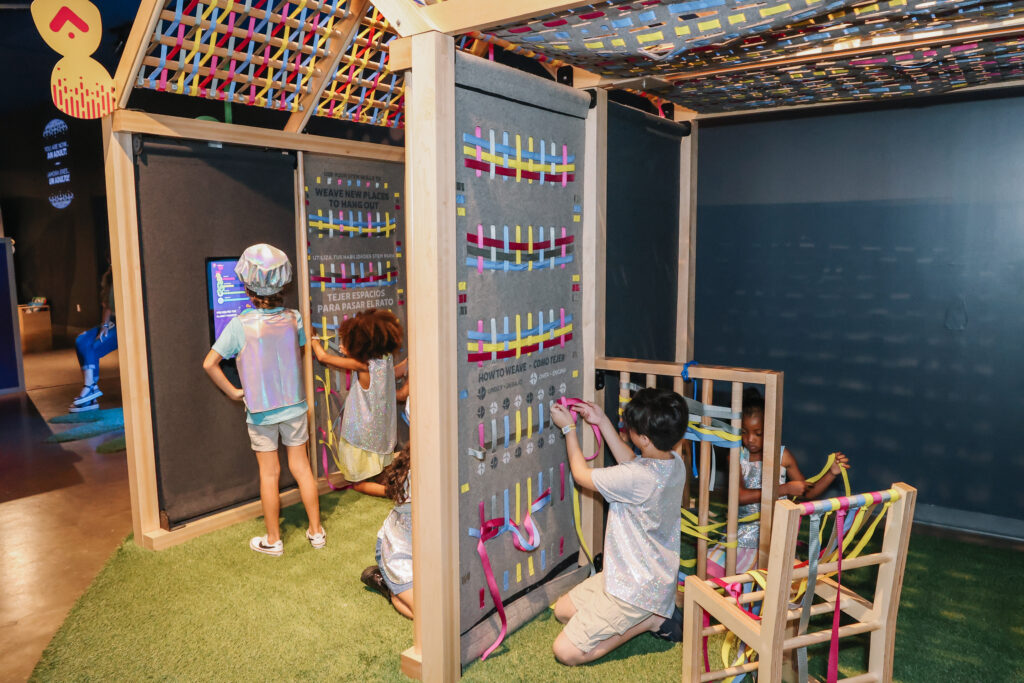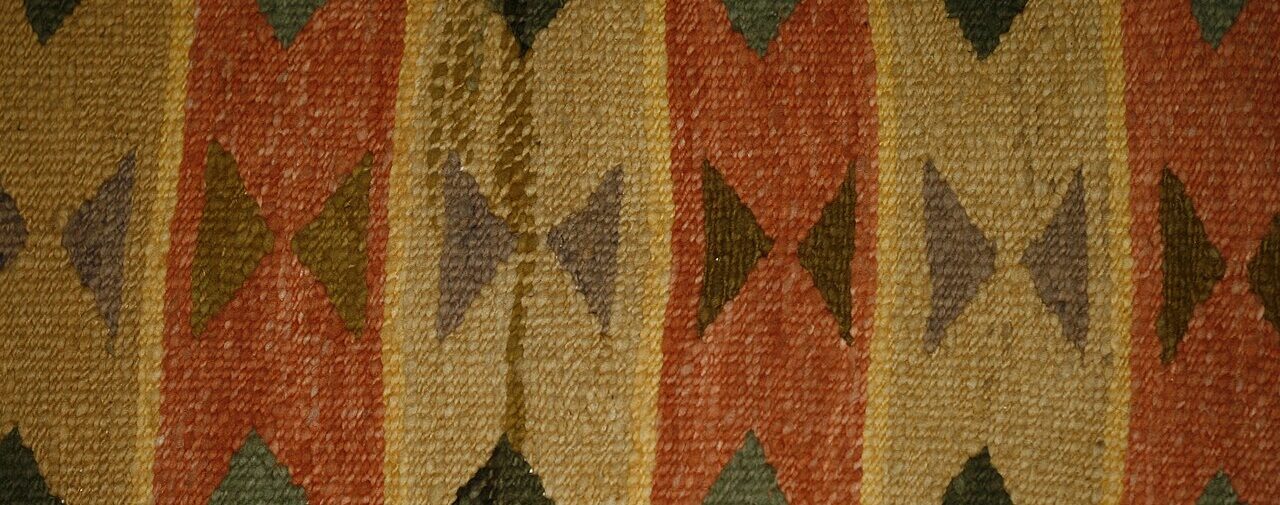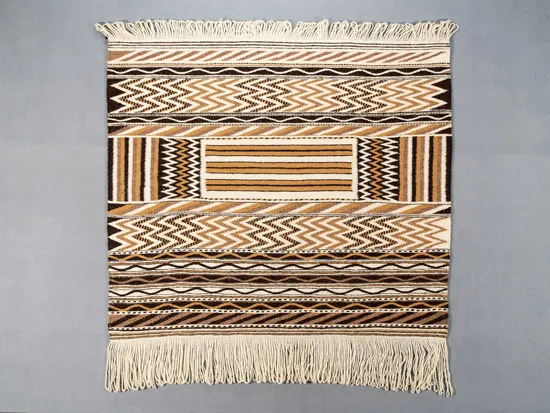Banner image: A blanket in the Simon Fraser University Museum of Archaeology and Ethnology
“The first thing you’re met with is our Weaving House,” says Nicole Vieira, Science World’s Student Program’s Manager and curator of Dream Tomorrow Today. She walks toward the small structure which includes educational screens.
The area is abuzz with children working on interlacing, braiding and twisting colourful strands of cloth — learning about the enduring practice of weaving.
Nicole says, “The Weaving House teaches you how to weave, trying to promote this idea that you are reusing materials, building something new out of something old … it’s really the visualization that the weaving brings the most value to.”

The children’s creations both imagine future sustainability and tie into a rich history on the xʷməθkʷəy̓əm (Musqueam), Sḵwx̱wú7mesh (Squamish), and səlilwətaɬ (Tsleil-Waututh) lands on which Science World is based.
For weavers like Debra Sparrow of xʷməθkʷəy̓əm, it feels like stepping back in time whenever she’s weaving a blanket.
“I leave the world behind,” she says in a short documentary called Weaving the Path.
“It’s my reason for being here and for being really responsible for how that moves through this world that we live in today.”
Coast Salish weaving — the art of creating blankets, robes and other pieces from thick strands of wool — is an ancient practice with both spiritual and practical purposes. It was done for countless years before colonization and continues on today.
Traditionally, blankets are spun and woven during the winter months. In the old days, the materials used included mountain goat hair, woolly dog hair (a species that is now extinct) and plant fibres, such as from cedar or willow trees. The materials are dyed so that intricate patterns can be woven into the design.
These materials are the ultimate in sustainability because they “can remain a long, long time; just look at the blankets in museums,” Chief Janice George of Sḵwx̱wú7mesh Nation explains in her co-authored book Salish Blankets : Robes of Protection and Transformation, Symbols of Wealth.

